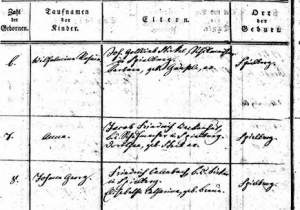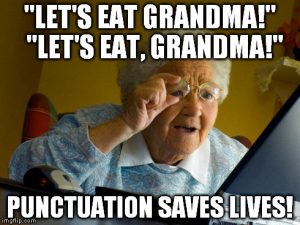Author’s Note: If you want more help transcribing your genealogy documents, join our Premium group – weekly access to live “office hours” where you can ask Katherine your transcription and translation questions – and get immediate answers.
It happens to all of us. We are feeling good about our transcription skills, happily deciphering our German document, when all of the sudden, a word appears that looks like this:
Alright, maybe not that bad, but sometimes it sure feels like it. So what can you do with these words that make you want to tear your hair out? Below, here are some tried and true tricks of the trade for when you can’t read a word:
1. Keep reading.
It sounds simple, but sometimes it’s the simplest things that work the best. Make some kind of mark in your transcription to note that you’ve skipped a word (I always write —-), and continue transcribing from that point. Many times your illegible word will be repeated in another section of your document, and this second occurrence of the word will be much easier to read than the first one.
2. Find a similarly-formatted record for comparison purposes.
For example, if your illegible word is part of a church record, look at the many other records on that same page. These records are usually all in the same format, and many times a word that is scrawled in your record will be much clearer in another record (who knows, maybe the scribe was in a hurry on the day of your ancestor’s baptism, but was in a more leisurely mood the next day). If it is a marriage certificate, look for another example of a marriage certificate that is formatted the same way.
Additional Tip: If you don’t have another record handy, try copy and pasting parts of your German transcription into Google Search Engine. Sometimes other genealogists will have posted their transcriptions and translations of similar records on forums or blogs, which Google Search Engine will then bring up. You can then check this transcription against your own record to see if there are any similarities, and, if so, if your difficult-to-read word then becomes clear.
3. Look to the next line.
Our ancestors often divided up words between lines, without using any hyphens or any other indication to mark this. Oftentimes the rest of your letters will be one line down, and then your word will make much more sense.
4. If the word you can’t read is a city or town, check if there are any types of headings or even stamps on your document.
Sometimes the answer is right there on the page, in incredibly easy-to-read type!
5. If one specific letter is illegible, scan your document to see if you have already deciphered a similarly-shaped figure in another word.
Perhaps you sight-read the word “Vater” (father), and by looking at that “r” in “Vater”, you then realize that the illegible letter in your current word might be an “r” as well. Another trick I employ is if a letter is written differently than the “normal” version of the letter, I will sometimes underline all instances of that strange-looking letter in my document. This then allows my brain to get used to the way this scribe writes the letter, making it easier to recognize in future words. Making a key for all these illegible letters can also be very helpful.
If you’d like more tips and tricks for deciphering German handwriting, check out my book with the same title: Tips and Tricks of Deciphering German Handwriting or enroll in our brand new online German handwriting course. Best of luck with your transcriptions!







